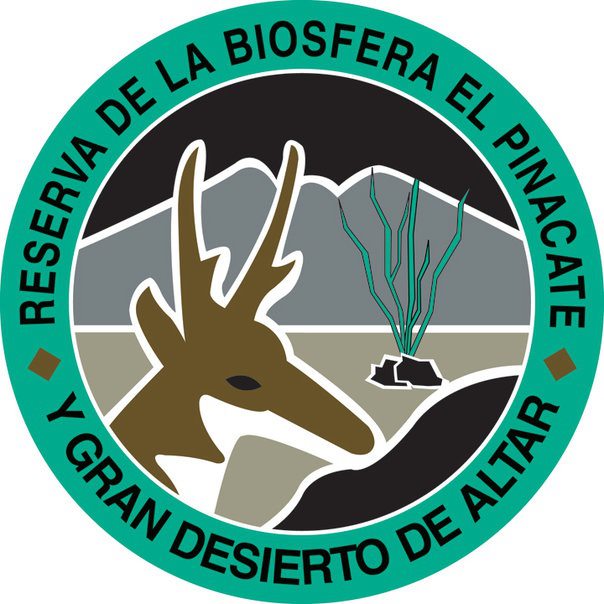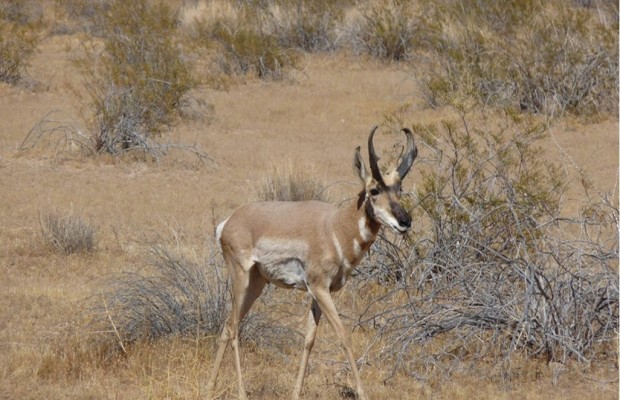The iconic figure of the Sonoran pronghorn antelope (berrendo) has been used to represent the region and the entire state of Sonora. A timid species, at the site of humans it tends to run lightly for miles until finding a hiding spot, earning it the name “ghost of the prairie,” as after seeing one they disappear.
 As the berrendo is an endangered species, the National Commission on Protected Areas (CONANP) at the Pinacate Biosphere Reserve has been working on a monitoring and protection program by installing hidden cameras that register photos and video as a way to learn more about areas where the species resides, along with data about food and births.
As the berrendo is an endangered species, the National Commission on Protected Areas (CONANP) at the Pinacate Biosphere Reserve has been working on a monitoring and protection program by installing hidden cameras that register photos and video as a way to learn more about areas where the species resides, along with data about food and births.
Currently, 100 berrendo, both male and female along with their young, have been counted. This number is only up by 60 from over nearly 20 years ago. The numbers show the berrendo have been reproducing and numbers (though slowly) are growing, detailed Miguel Grageda, CONANP Resource Management Coordinator at the Pinacate Reserve.
“The ghost of the prairie” is considered to be one of the lightest mammals in North America, explained Grageda, and can be spotted looking for food in open spaces, plains, and valleys. This is why the only way to obtain data about its habitat and reproduction is by placing movement-sensor activated cameras in specific spots. He noted there is a large herd of berrendo along the Pinacate mountain range, which also spread into Arizona though rarely come near the highway.
A recent press release issued by the Pinacate Biosphere Reserve pointed to possible negative impacts upon regional wildlife in the region in the event a physical barrier were to be built between Sonora and Arizona. This would particularly impact the berrendo, bighorn sheep, mule deer, mountain lions, among others.
With this in mind, details the press release, more than 10 years ago the decision was made to not place a barrier in important spots, allowing for fences that would mark the boundaries of both countries yet allow for passage of wildlife along their natural migration routes.
“The construction of a physical barrier along the border would mean dividing these populations, or isolating individuals, thereby preventing genetic flow and restricting access to food sources during dry periods, impacting threatened and endangered species from the region, such as the Sonoran pronghorn,” the text states.
